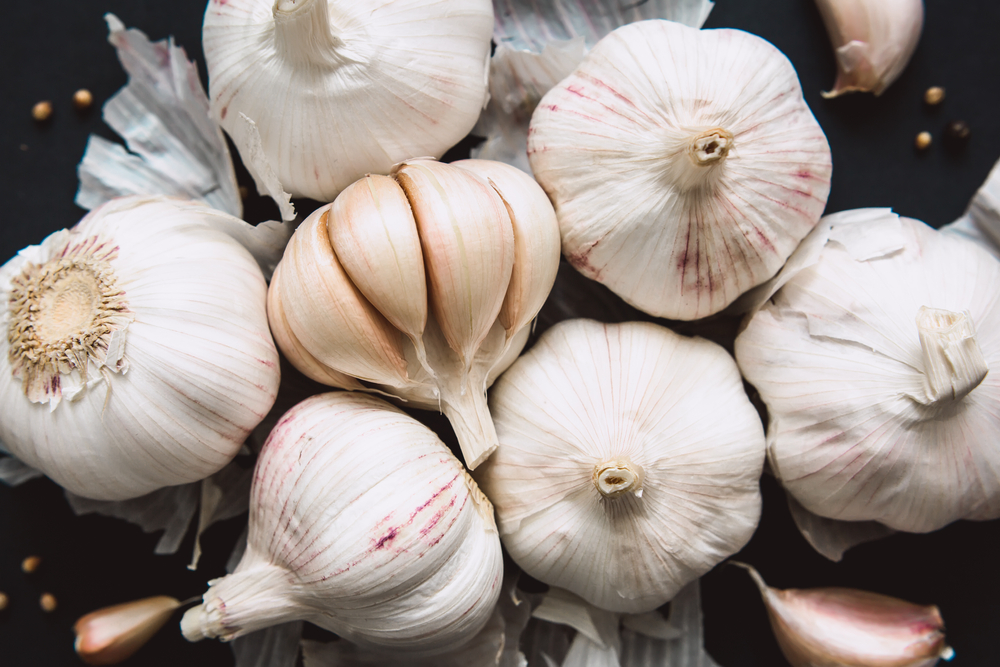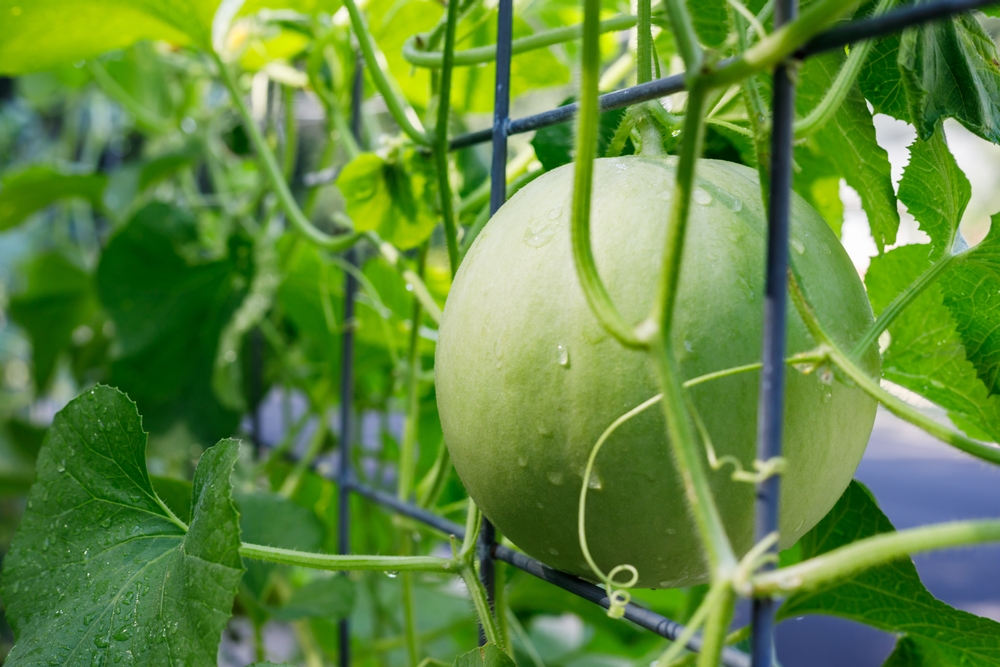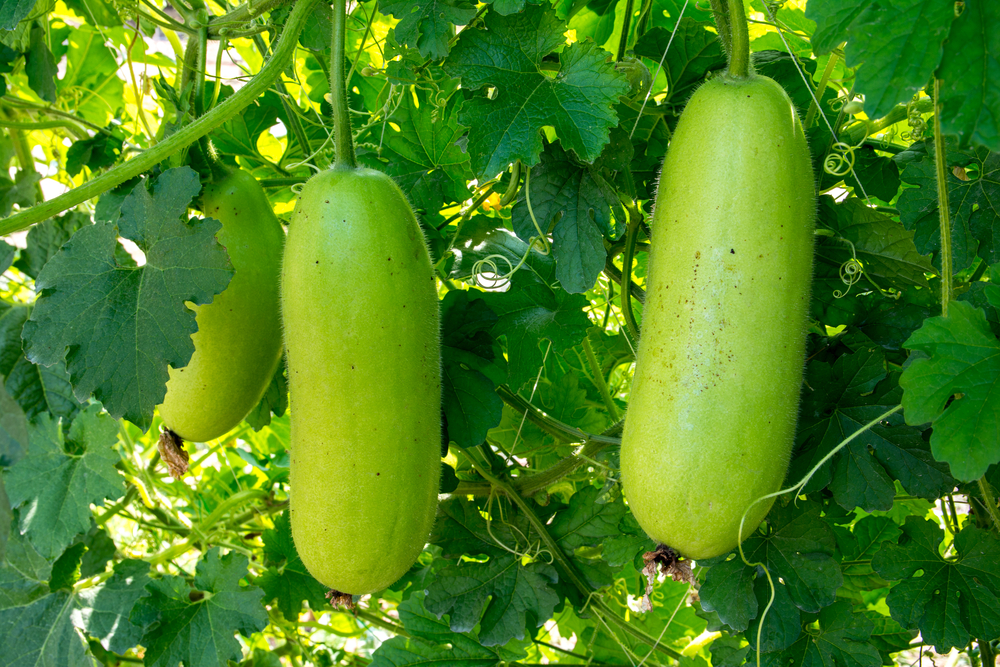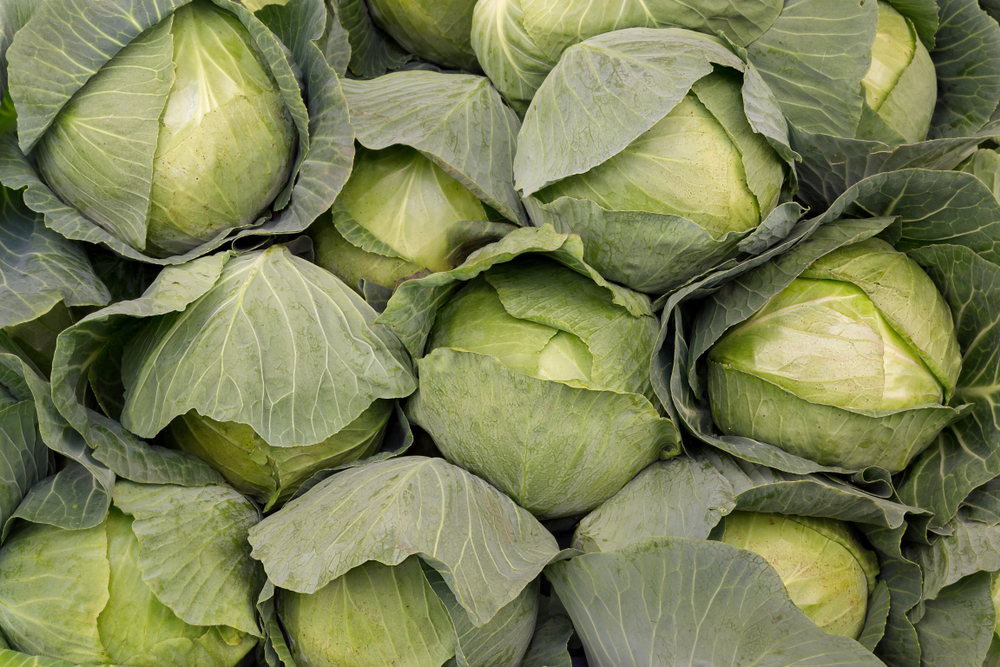December signifies the start of a more favorable planting season for many crops, allowing farmers to diversify their harvests and ensure a steady supply of fresh produce throughout the year. Here are some crops you can plant in the month of December.
Garlic (Allium sativum)
Garlic, locally referred to as bawang, is a valuable perennial herb that is highly esteemed in the Philippines for its culinary and medicinal attributes. Garlic is rich in calcium, phosphorus, potassium, protein, and Vitamins A and C. Its antibiotic properties, inhibiting the growth of certain bacteria and fungi. Moreover, scientific research unveiled its potential to prevent blood clot formation, reducing the risk of heart attacks and strokes.

Garlic thrives in various soil types, with sandy, silt, and clay loam being particularly suitable for commercial production. The soil must be fertile, rich in organic matter, with proper drainage, and moisture retention capacity. Excessive rainfall should be avoided, as it adversely affects garlic growth.
Optimal planting materials are fully-matured bulbs with medium to large cloves, free from diseases and mechanical damage. Cloves are planted vertically, and inserted two-thirds of their length into the soil, at distances ranging from 15 cm to 20 cm by 10 cm to 25 cm. Mulching is applied post-planting, with materials such as rice straw, cogon, hulls, sawdust, grasses, or polyethylene sheets, serving to control soil moisture and weed growth.
Garlic matures 90 to 120 days after planting, with earlier plantings generally taking longer to mature. Maturity indicators include stem softening above the bulb and 75% yellowing of leaves. Harvesting involves manually pulling individual plants, and the bulbs can be sun or air-dried over 3 to 4 days. Afterward, garlic can be bundled and stored under ambient conditions, typically in well-ventilated areas.
Cauliflower (Brassica oleracea var. botrytis)
Cauliflower is a member of the Brassicaceae family, which includes other cabbage family members like broccoli, Chinese cabbage, Brussels sprouts, and kale. Cauliflower is a source of essential minerals like phosphorus and calcium, as well as vitamins such as Vitamin C, beta-carotene, thiamine, riboflavin, niacin, and antioxidants linked to reduced cancer risks. Cauliflower curds are versatile ingredients used in salads and pickles, while young leaves and stems are occasionally incorporated into vegetable stews.

Cauliflower thrives in humus-rich, well-drained, loamy soils. The optimal soil pH range for maximum yields falls between 5.5 and 7.0. Liming is recommended when soil pH drops below 5.5. Adequate and well-distributed rainfall is essential to maintain soil moisture at field capacity. The crop prefers a climate with cool nights and warm days with full sunlight.
The maturity of cauliflower is determined by specific indicators, including the firmness of the curd (the white head of the cauliflower), its size, and the senescence of the outer wrapper leaves, which lose their dark green color. The time to maturity typically ranges from 45 to 65 days, depending on environmental conditions. A well-managed cauliflower crop can yield between 18 to 22 tons per hectare. Harvesting methods involve manual techniques, including selective harvesting or a single, comprehensive harvest. Bamboo baskets, plastic bags, or plastic crates are commonly used containers for storing and transporting the harvested cauliflower curds.
Honeydew melon (Cucumis melo var. inodorus)
Honeydew melon is a beloved fruit known for its sweet, succulent flesh and refreshing taste. It thrives in temperatures ranging from 25 to 35°C, with the seed germinating optimally between 28 to 30°C. Abundant sunshine is essential for healthy plant growth, although continuous rainfall or excessive humidity can negatively impact flowering and fruit development. The cultivation area should be free from ground-dwelling pests and diseases.

To grow honeydew melon, sow the pre-germinated seeds into seedling trays, ensuring each hole contains one seed with the embryo facing downward. Cover with a thin layer of medium and water thoroughly. Protection from strong wind and heavy rain may be necessary if there is no nursery or greenhouse. Prepare the planting area by plowing and cleaning it. Create flat beds for sandy soils and raised beds for sandy loam or clay soils, with a bed width of 1 meter and a 0.5 meter canal.
Maintain adequate moisture levels during the early growth stages by irrigating the plants 2-3 times a week. As fruits reach full size during ripening, consider reducing water to enhance fruit quality. Prune honeydew melon plants to improve fruit setting, fruit quality, and ease of harvesting.
The indicators of maturity include the presence of nets on the bottom part of the fruit, complete and vibrant rind color (not pale or light), and a substantial weight for its size. Quality honeydew melons are typically harvested before full maturity, at around 80% ripeness, which helps extend their shelf life. The fruits are at their peak taste within 2-3 days after harvest, making them ideal for the fresh market.
Winter melon (Benincasa hispida)
Winter melon, locally known as kundol, is a distinctive vine crop cherished in the Philippines for its large fruit. When young, this gourd boasts a fuzzy exterior and sweet, thick white flesh, making it a favored vegetable. However, as it matures, the fruit undergoes a transformation, losing its fuzziness and developing a protective waxy coating, earning its name as the "wax gourd."

Winter melon thrives in a warm climate with an optimal temperature range of 23-28°C. This vine requires a substantial growing season, approximately five months, to reach full maturity, although it can be harvested at various stages of immaturity. While reasonably drought-tolerant, winter melon grows well when provided with abundant sunlight and occasional watering.
Winter melon can be grown either flat on the ground or allowed to trail over supports, fences, or trellises. Some growers may choose to nip out the growing points on young plants to encourage lateral branching and earlier fruiting. Straw can be tucked beneath maturing fruits to keep them dry, and if the fruit becomes too heavy, nets can be employed to support them.
Winter melon typically begins flowering 60-80 days after planting and relies on insect pollination. Immature fruits, a few inches long, can be harvested as early as a week after pollination. However, mature fruits should be left on the vine until they exhibit a waxy bloom, which can continue developing even during storage.
Cabbage (Brassica aleracea L. var. capitatacruciferae)
Cabbage, locally known as repolyo, belongs to the group of cole crops and is renowned for its firm, compact, round heads. Cabbage is a rich source of essential nutrients such as beta-carotene, vitamin C, and dietary fiber.

Cabbage thrives in a relatively cool and humid climate, making it suitable for highland areas. It is crucial to understand the specific climatic conditions that support cabbage growth. Optimum temperatures range from 18°C to 20°C. Cabbage's adaptability to various climatic conditions allows it to be grown throughout the year in most regions of the Philippines. Successful cabbage cultivation relies on well-drained soils with ample organic matter and an optimal pH range of 6.0 to 6.8.
Cabbage seeds are typically sown in seed boxes or variant beds, depending on the scale of cultivation. The seedlings require careful attention and care, to ensure they reach the desired size and hardiness for transplanting. Transplanting should be done on moist soil, with the seedlings' shoot apex positioned above the ground level.
Weeding, fertilization, and irrigation play pivotal roles in ensuring a bountiful harvest. Cabbage is a heavy feeder, requiring supplemental fertilization, including nitrogen, phosphorus, potassium, and micronutrients. Adequate irrigation is essential, with careful scheduling to avoid excess moisture that can lead to head cracking.
Cabbage is harvested when the heads have reached their full size, becoming firm and hard yet tender. Maturity can also be indicated by the head's color, which tends to lighten as it fully develops. Harvesting should be done carefully to avoid head bruising, which can diminish its market value.